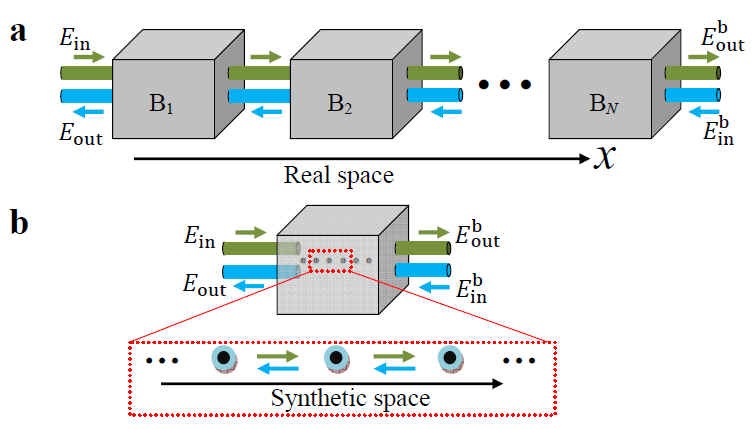A brand-new design route of all-optical devices based on synthetic lattices was reported on
Nature Communications on July 14th[Nat Commun 8,16097(2017)]. GUO Guangcan and his team, from University of Science and Technology of China, proposed an innovative design approach which allows the realization of all-optical devices such as quantum memories and optical filters using a single main degenerate cavity.
All-optical photonic devices are crucial for many important photonic technologies and applications, ranging from optical communication to quantum information processing. Conventional design of all-optical devices is based on photon propagation and interference in real space, which may rely on large numbers of optical elements, and the requirement of precise control makes this approach challenging. Prof. ZHOU Zhengwei et al. have proposed a new route for engineering all-optical devices using the photon’s internal degrees of freedom, which form photonic crystals in such synthetic dimensions for photon propagation and interference. The authors showed how important optical devices such as quantum memory and optical filters can be realized using synthetic orbital angular momentum (OAM) lattices in degenerate cavities. The design route utilizing synthetic photonic lattices may significantly reduce the requirement for numerous optical elements and their fine tuning in conventional design, paving the way for realistic all-optical photonic devices with novel functionalities.
The key idea is to design a degenerate cavity supporting photonic modes carrying different orbital angular momentum (i.e. the Laguerre-Gaussian modes), which can be coupled with each other by simply adding an auxiliary optical circuit. Also, the idea of mapping photon’s internal degrees of freedom to a synthetic dimension was first proposed by Prof. ZHOU Zhengwei et al to study the 2D topological photonics [Nat. Commun. 6, Article Number 7704 (2015)] and Floquet topological physics [Phys. Rev. Lett. 118, 083603 (2017)]. The current paper proposed for the first time the design route of all-optical devices based on synthetic lattice.
This work was funded by NNSFC, NKRDP, CAS. For more details, see “Synthetic-lattice enabled all-optical devices based on orbital angular momentum of light”, Xi-Wang Luo, Xingxiang Zhou, Chuan-Feng Li, Jin-Shi Xu, Guang-Can Guo, Chuanwei Zhang and Zheng-Wei Zhou. (Website: http://dx.doi.org/10.1038/ncomms16097).

Illustration of the design principle. a) Conventional all-optical devices based on real space interference. b) New design route of all-optical devices based on synthetic lattices.
(School of Physical Sciences)